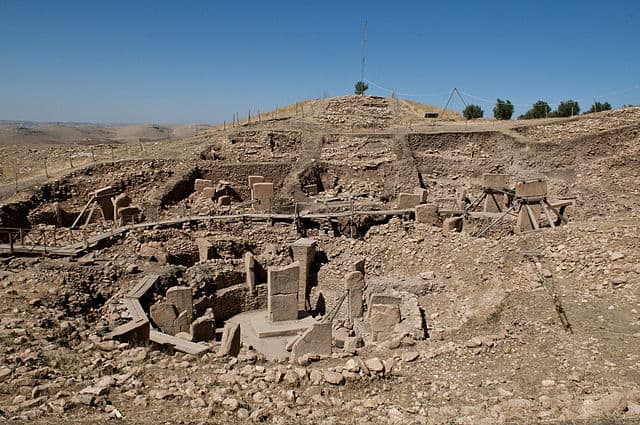
Gobekli Tepe
Göbekli Tepe is a Neolithic archaeological site near the city of Şanlıurfa in Southeastern Anatolia, Turkey. The tell or artificial mound has a height of 15 m (50 ft) and is about 300 m (1,000 ft) in diameter, approximately 760 m (2,500 ft) above sea level. It includes two phases of use, believed to be of a social or ritual nature by site discoverer and excavator Klaus Schmidt. Its oldest layer dates to the very beginning of the Neolithic, the Pre-Pottery Neolithic A (PPNA), or roughly the 10th to 9th millennia BCE. The younger phase belongs to the Pre-Pottery Neolithic B, or the 9th to 8th millennia BCE. Still during the early phase, in the 10th millennium BCE, circles of massive T-shaped stone pillars were erected, classified as the oldest known megaliths, some 3,000 years older than the earliest cities of Mesopotamia.
More than 200 pillars in about 20 circles are known (as of May 2020) through geophysical surveys. Each pillar has a height of up to 6 m (20 ft) and weighs up to 10 tons. They are fitted into sockets that were hewn out of the local bedrock. In the second phase, belonging to the Pre-Pottery Neolithic B (PPNB), the erected pillars are smaller and stood in rectangular rooms with floors of polished lime. The site was abandoned after the Pre-Pottery Neolithic B (PPNB). Younger structures date to classical times.
